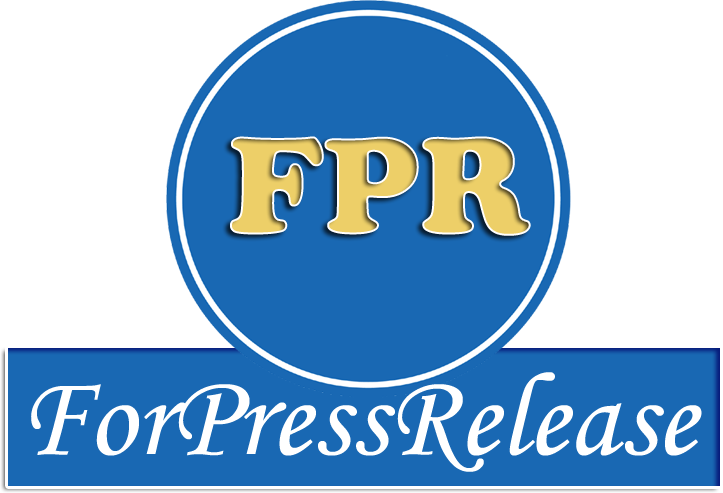- BOOTES and CargoPeople Announce Joint Venture for Launching BOOTES Cold Storage
- Future Electronics Singapore Celebrates International Women's Day 2024
- Punyam.com Has Recently Started Offering the ECOPASSPORT- ZDHC Certification Consultancy
- StockGro and The Economic Times Announce Strategic Partnership to Empower Indian Investors
- Tomei, Christensen, 'Vacation,' 'The Office' Q&As Among Top Programming at FAN EXPO Philadelphia
- Rohde & Schwarz expands footprint in India by opening new state-of-the-art facility in Bengaluru
- Dempsey Kingsland & Osteen Highlights the Importance of Having the Support of a Medical Malpractice Attorney in Kansas City
- Renowned Mentor Shreekant Patil Recognized and Awarded by IIT Bombay E-Cell for Exceptional Mentorship at Eureka 2023
- FIITJEE's Long Term Classroom Program Students continue its Supremacy by securing All India Ranks 3, 13 & 16 in JEE Main 2024
- RDATourism Introduces Advanced MICE Tourism Services for Business and Corporate Events
- Indian School of Hospitality has announced admission for BBA in Hospitality Management
- My Guy Pest and Lawn Announces Specialized Ant Extermination and Boxelder Bug Control Services in Utah
- PalsCity Unveils Exciting New Blog Post in May 2024
- Housing Guards Introduces Comprehensive Range of Drywall Supplies in Oshawa
- Kevin's Review Students Score Another Perfect NCLEX Pass Rate in 2023
 Mail to a Friend Mail to a Friend |
|
     |
The Difference between Disinfecting, Cleaning & Sanitizing as Explained by the CDC
Cleaning only removes visible dirt and germs from surfaces. Usually you use soap and water for this. You are not necessarily killing germs but by removing them physically, you're lowering their number and your risk of infection.
Disinfecting uses chemicals to destroy germs not visible to the naked eye rather than simply reducing them. The procedure may not necessarily clean a dirty surface, but by disinfecting it, you reduce the risk of infection. You might disinfect areas where you change a baby's diaper. Hospitals disinfect areas that have come into contact with blood or other body fluids.
Sanitizing lowers the number of germs to a safe level as judged by public health standards. It can involve either cleaning or disinfecting (or both). Usually you sanitize in kitchens and other areas that come into contact with food. For example, you sanitize dishes and utensils after using them. You may also sanitize toys that children put in their mouths.
If you are trying to get rid of bacteria and viruses (for instance during flu season or a coronavirus outbreak), you will want to disinfect rather than sanitize. EPA-approved sanitizers only take care of bacteria, while EPA-approved disinfectants kill both bacteria and viruses.
Once you have followed your cleaning, disinfecting and sanitizing steps within your home or organisation during either the current pandemic or going forward you would be making a wise decision to do a complete job by taking advantage of Atmospheric Air fogging solutions we have to offer which assist in eliminating daily pathogens which infect our air through droplets which spread over time during the day and end up on all surfaces within our spaces. Taking these steps further assists with prevention as it can disinfect areas that you might not reach such as air ducts, blinds, under counters assisting in further prevention as a barrier against infections. With the costs of equipment having either come down drastically over the years and the introduction of smaller portable fogging units this has now become a possibility without breaking the bank.
Basic Guide to disinfection fogging and explanation
In recent years, the standard of personal hygiene and sanitation has been raised. High traffic areas with objects touched by different people require more attention, which has increased the need for cleaner surfaces and more competent disinfection methods. Disinfection supplies, such as wipes, sprays, hydrogen peroxide, and bleach, have never been in higher demand and it is easy to see the important role they play in battling microbial contamination. In this article, you will learn about Disinfectant Fogging, a whole room disinfection method. Although this technology has been around for years, it has gained more attention recently due to the shift of higher sanitation requirements
What is Disinfectant Fogging?
Disinfectant Thermal Fogging takes ordinary disinfecting to the next level. Due to the limited size and expulsion capabilities of a typical spray bottle, over-the-counter disinfectants will only disinfect a small, targeted area. Disinfectant Thermal Fogging, however, creates a wide-reaching Fog that covers high traffic and hard to reach surfaces, applying disinfectant throughout.
The fogging application will cover anything it comes in contact with surfaces, floors, and hard-to-reach places that oftentimes go unnoticed. Disinfectant thermal or ULV fogging also combats airborne pathogens as it passes through the air and lands on a surface. A recently disinfected home or business should be evacuated for at least six hours after being fogged.
Benefits of Disinfectant Fogging
Over time, your home or business naturally collects dust, bacteria, and viruses. Although germs gather everywhere, they are of special concern in high contact areas. High contact areas are the objects and surfaces where you and other individuals touch the most. Prime examples include doorknobs, tabletops, and light switches. The high amount of traffic that visits these areas makes them perfect breeding grounds for germs and easy exposure points for cross-contamination. The more people that touch an area the more likely they leave bacteria for the next person to pick up. Fogging can apply disinfectant to large spaces including high contact areas, lowering the chance germs will spread between persons. Routine fogging can reduce the number of pathogens that reside in the building, therefore lowering contact risk.
The above list is a general guideline for fogging. Please ask one of our specialists to assist you with what will best suit your needs and environment.
Company :-Saniizeme
User :- Kingsley Chambers
Email :-linda@sanitizeme.co.za
Phone :-0876548009
Url :- https://sanitizeme.co.za/foggers-disinfectant/









